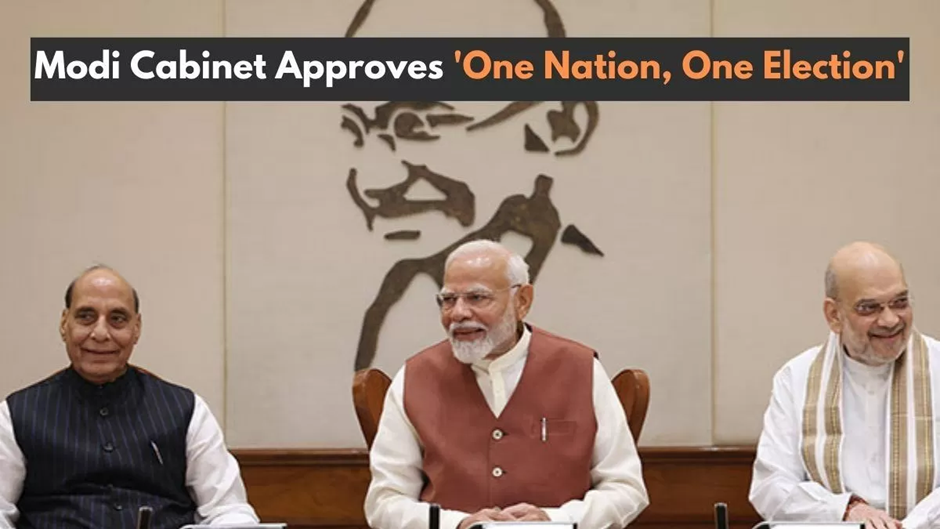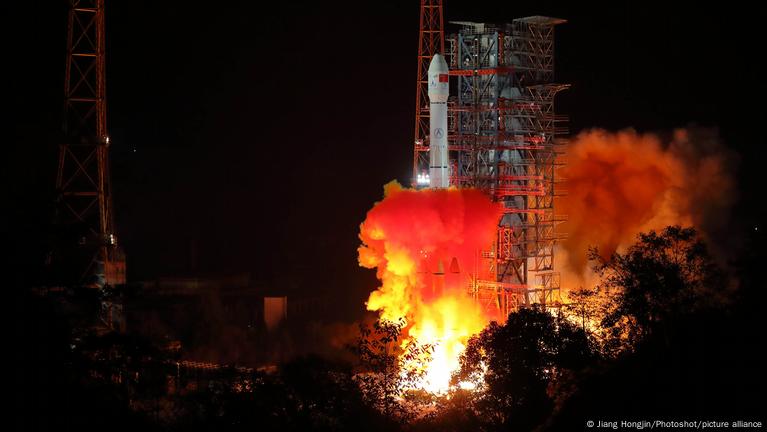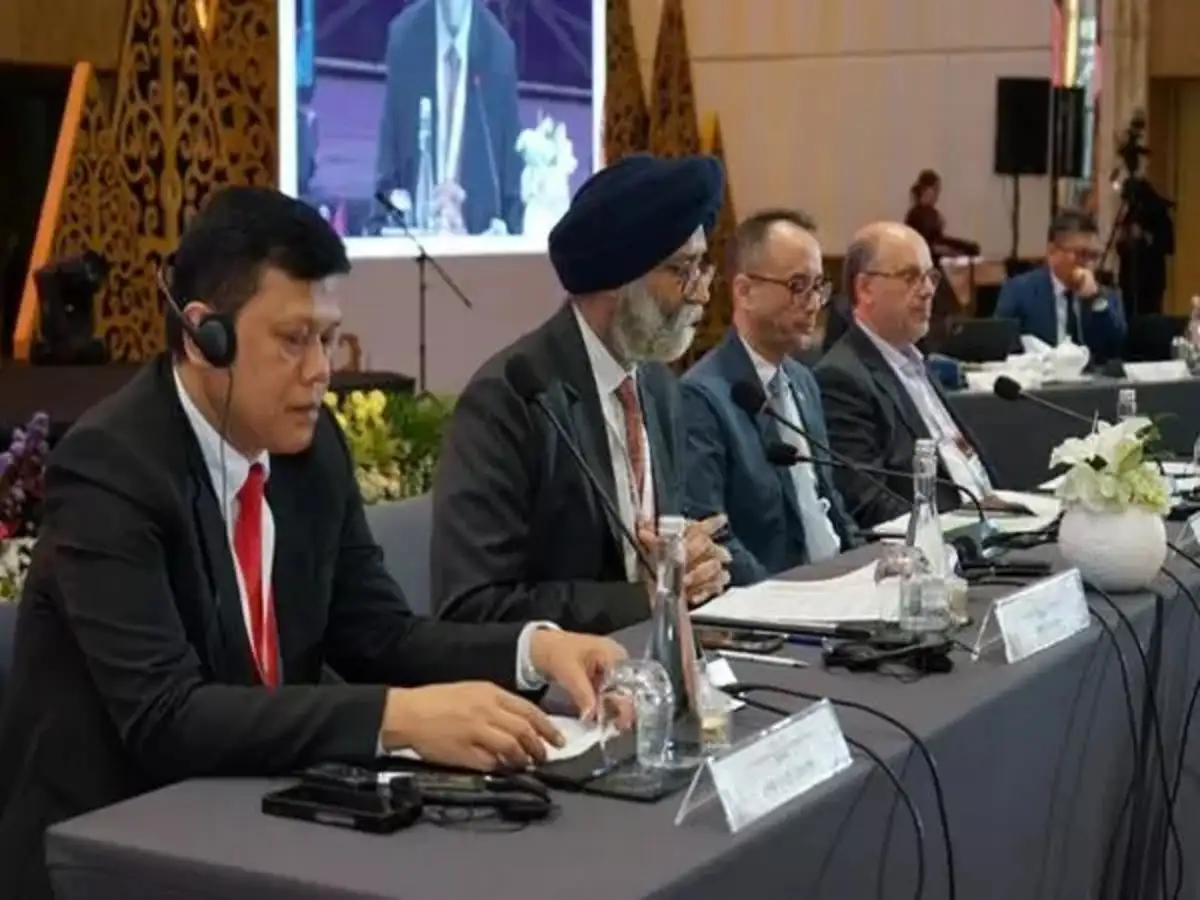- Courses
- GS Full Course 1 Year
- GS Full Course 2 Year
- GS Full Course 3 Year
- GS Full Course Till Selection
- Online Program
- GS Recorded Course
- NCERT (Recorded 500+ Hours)
- Polity Recorded Course
- Geography Recorded Course
- Economy Recorded Course
- AMAC Recorded Course
- Modern India, Post Independence & World History
- Environment Recoded Course
- Governance Recoded Course
- Science & Tech. Recoded Course
- International Relations and Internal Security Recorded Course
- Disaster Management Module Course
- Ethics Recoded Course
- Essay Recoded Course
- Current Affairs Recoded Course
- CSAT
- 5 LAYERED ARJUNA Mentorship
- Public Administration Optional
- ABOUT US
- OUR TOPPERS
- TEST SERIES
- FREE STUDY MATERIAL
- VIDEOS
- CONTACT US
Union Cabinet Approved 'One Nation, One Election'
Union Cabinet Approved 'One Nation, One Election'

The Union Cabinet has recently approved a proposal for simultaneous elections across India, aligning polls for the Lok Sabha, state Assemblies, and local bodies. This decision follows recommendations from a high-level committee chaired by former President Ram Nath Kovind on the "one nation, one election".
- In 1951-52, 1957, 1962, and 1967, elections for both the Lok Sabha and state assemblies were held simultaneously.
- However, later this sequence was broken due to premature dissolution of some assemblies, and in 1970 the Lok Sabha was also dissolved prematurely.
Background:The high-level committee, chaired by former President Ram Nath Kovind, presented its report in March. This was a key part of the law ministry’s 100-day agenda. The ECI currently oversees Lok Sabha and assembly elections, while state election commissions handle local body elections. Implementation Plan1. Two-Phase Election Process:
2. Common Electoral Roll:
3. National Consultations:
Single Electoral Roll: Proposed changes include a single electoral roll for all polling within a constituency, which will also require state ratification. Law Commission Report: The Law Commission is expected to release a report soon recommending simultaneous elections across all tiers of government starting in 2029. Key Recommendations from the Kovind Panel:1. Appointment of Date:
2. Short-Term Assembly Terms:
3. Fresh Elections in Special Cases:
Constitutional Amendments
Ratification Process
|
Previous Recommendations on Simultaneous Elections
The concept of "one nation, one election" was initially put forth in the 1980s. In May 1999, the Law Commission, led by Justice BP Jeevan Reddy, declared in its 170th Report that "we must go back to the situation where the elections to Lok Sabha and all the Legislative Assemblies are held at once."
- Law Commission: Recommended simultaneous elections for cost savings and reducing strain on administrative structures.
- 1999 Recommendation: Suggested holding simultaneous elections to Lok Sabha and State Assemblies to improve the electoral system.
- Parliamentary Standing Committee: Proposed a practical method for conducting simultaneous elections.
- NITI Aayog: Advocated for simultaneous elections to enhance governance and reduce frequent election cycles.
What are Simultaneous Elections?
- Holding elections for Lok Sabha, state Assemblies, and local bodies (Municipalities and Panchayats) on the same day, allowing voters to cast their votes for all government tiers concurrently.
- Historical Context: Simultaneous elections were practiced until 1967, after which political instability led to the end of this practice, resulting in frequent elections (5-6 per year).
Need for Simultaneous Elections
- Cost Reduction: General elections for Lok Sabha cost approximately ₹4,000 crore; simultaneous elections could lower overall costs.
- Campaign Mode: Frequent elections hinder effective policy-making due to a constant 'permanent campaign' mode.
- Model Code of Conduct: Limits new scheme announcements during elections, impacting governance.
- Administrative Efficiency: Reduces disruption in administrative machinery and reallocates security forces.
- Social Cohesion: High-stakes elections can polarize society; fewer elections may help mitigate this.
- Economic Stability: Frequent elections create uncertainty that can affect business investments and economic growth.
- Voter Engagement: Reduces voter fatigue by consolidating elections into one process.
Concerns Associated with Simultaneous Elections
- Federal Spirit Undermined: National parties may dominate, marginalizing regional parties that focus on local issues.
- Electoral Feedback Mechanism: Conducting elections every five years could disrupt timely governance feedback.
- Premature Dissolution Issues: Raises questions about whether new elections are needed in states when the Lok Sabha loses majority.
- Lengthy Constitutional Amendments: Complex amendments to several articles required, which may face legislative hurdles.
- Voter Engagement: Corporate media influence in simultaneous elections could overshadow local campaigning methods employed by regional parties.
Addressing Concerns Associated with Simultaneous Elections
- Democratic Nature of Governance: Politicians must seek re-election, ensuring they remain accountable to their electorate.
- Accountability Mechanisms: The Council of Ministers and judicial oversight provide checks on political accountability.
- Corruption Control: Simultaneous elections could reduce opportunities for corruption linked to campaign financing.
- International Comparisons: Other parliamentary democracies, like South Africa and Sweden, have fixed election cycles without frequent disruptions.
Conclusion
Simultaneous elections present potential benefits, such as reduced costs and improved governance. However, they also pose significant challenges, including necessary constitutional amendments and concerns about federalism. A balanced approach involving stakeholder consultations and phased implementation could effectively address these issues while realizing the advantages of concurrent elections across India.
Must Check: Best IAS Coaching In Delhi
UPSC Prelims Result 2024 Out: Expected Cut Off & Other Details, UPSC Prelims 2024 Answer with Explanation, Daily Prelims Quiz, Daily Current Affairs, MONTHLY CURRENT AFFAIRS TOTAL (CAT) MAGAZINE, Best IAS Coaching Institute in Karol Bagh, Best IAS Coaching Institute in Delhi, Daily Mains Question Answer Practice, ENSURE IAS UPSC Toppers, UPSC Toppers Marksheet, Previous Year Interview Questions, UPSC Syllabus




